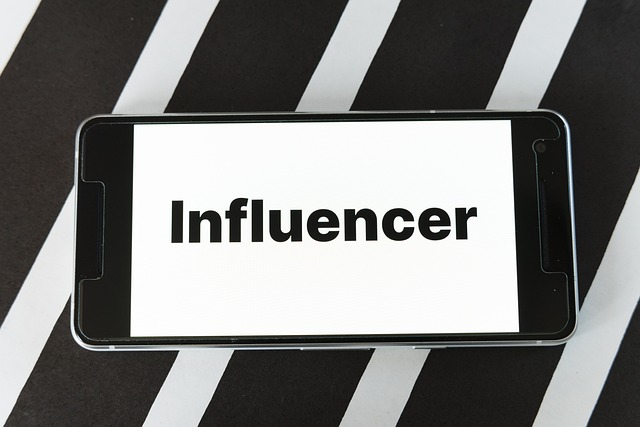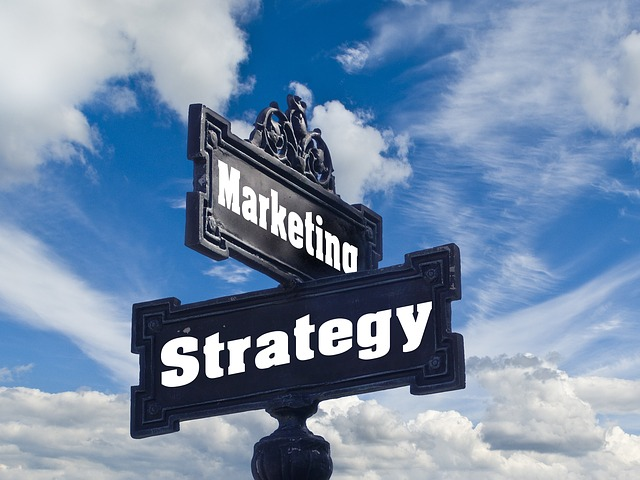We’ll increase conversions by
20-100+%
on your website.
Get a FREE Audit today
See how we can help your business increase conversion rates
How To Increase Brand Awareness

Introduction
In today’s competitive market landscape, increasing brand awareness has become an essential component of a successful business strategy. Whether you’re running a small startup or managing a well-established company, raising the profile of your brand can lead to increased customer loyalty and long-term growth.
In this comprehensive guide track brand awareness, we will explore various strategies that have been proven to drive brand recognition and recall. From creating a unique identity that sets your brand apart from the competition to leveraging social media platforms for targeted marketing efforts, there are countless opportunities for expanding your reach and making a lasting impression on potential customers. So grab a cup of coffee, settle in, and let’s dive into the world of increasing brand awareness together!
Building A Strong Brand Foundation
Creating a unique brand identity is crucial in building a strong brand foundation and increasing brand awareness.
Creating A Unique Brand Identity
Creating a unique brand identity is crucial for businesses looking to make a lasting impression in their industry. A strong brand identity consists of various elements including a distinctive logo, visual design, and compelling brand message that resonates with the target audience. It is important that these elements tie together in order to evoke specific emotions and values associated with the brand.
Having a memorable and consistent brand identity not only sets your business apart from competitors but also fosters customer loyalty by increasing recognition and trust. By a consistent brand voice and focusing on conveying your company’s unique selling proposition through all aspects of your branding efforts, you can ensure that customers associate positive feelings with your products or services. This ultimately contributes to increased brand awareness and long-term success within the market.
Understanding Your Target Audience
Understanding your target audience is crucial in building a strong brand awareness strategy. A well-defined target audience allows you to tailor marketing messages that resonate with their needs, preferences, and aspirations. By conducting thorough market research, you can identify the demographics, psychographics, and behavioral patterns of your ideal customers.
When you have a clear understanding of your target audience, it becomes easier to create relevant content and marketing campaigns that will appeal to them. This increases the chances of engagement and conversions while also ensuring a consistency in messaging that fosters brand recognition among consumers. Keep in mind that trust, transparency, and excellent customer service are key factors in both brand awareness means creating positive associations with your brand among your target audience.
Finally, monitoring consumer perception measure brand awareness through market research helps measure the effectiveness of your efforts as well as identifying areas for improvement or potential opportunities for growth. With this data-driven approach, raising brand awareness becomes systematic and much more achievable. In turn, this positively impacts overall marketing efforts and revenue generation for businesses investing time in understanding their target audiences thoroughly.
Developing A Cohesive Brand Message
Developing a cohesive brand message is critical to ensure that customers understand and appreciate the values of a company. By creating consistent messaging across all channels, businesses can build strong connections with their target audience and increase brand awareness. It is essential to consider tone of voice, visual identity, and every element that contributes to establishing a positive core image for the brand.
Using effective language in all communications means being mindful of the target audience and choosing words that will resonate with them positively. A consistent style provides clarity about what an organization represents by promoting trust in its mission statement. Once a business has established a unique voice, everything else falls into place more easily—customers who recognize it become confident ambassadors for continued growth and expansion.
Effective Strategies For Increasing Brand Awareness Campaigns

There are several effective strategies for increasing brand awareness, including content marketing through blog posts and videos, creating a strong social media presence with targeted advertising, partnering with influencers to reach new audiences, sponsoring events and hosting your own to build more brand awareness and recognition, implementing referral and loyalty programs for your paying customers, and forming strategic partnerships with other brands.
Content Marketing
Content marketing is a cost-effective way to increase brand awareness and attract potential customers. By creating valuable and interesting content that speaks directly to your target audience, you can establish trust and credibility in your industry. This type of marketing allows businesses to showcase their expertise and unique point of view while also providing information that the audience finds helpful.
To effectively use content marketing for brand awareness, it is important to understand the target audience’s needs, interests, and pain points. By creating a content strategy that addresses these factors, you can ensure that your messaging resonates with your consumers. A company’s blog is often used as a tool for creating brand awareness by publishing relevant and engaging content on a regular basis. By consistently providing value through blog posts, companies can position themselves as thought leaders in their niche market.
Social Media Strategy
Social media is a key component in any brand awareness campaign. With over 3.8 billion social media users worldwide, it’s important to have a strong presence on popular platforms like Facebook, Instagram, Twitter and LinkedIn. By sharing relevant and valuable content that resonates with your target audience, you can build trust and loyalty while increasing your brand visibility.
One effective strategy for social media success is to create a content calendar that outlines the types of posts you’ll share each day of the week. This can include product or service highlights, industry news articles, behind-the-scenes photos and videos or user-generated content (UGC). UGC is particularly powerful because it not only showcases happy customers but also exposes their networks to your brand. Additionally, utilizing paid social advertising can expand your reach even further by targeting specific demographics within your target audience.
Influencer Marketing

Influencer marketing has become an effective strategy for brands to increase their brand awareness. By collaborating with social media influencers, brands can reach a wider range of audiences and build trust among potential customers. Influencers have the power to promote products through endorsements, shares in their stories or posts, and product reviews.
Marketers of all sizes have recognized the value that influencer marketing brings to their business by both brand awareness ads boosting sales and revenue over time. This cost-effective way of promoting a brand helps establish positive associations between products and services with potential customers. Leveraging these partnerships allows businesses to tap into new audiences while building high brand awareness across various channels like Instagram, Snapchat, TikTok, etc.
Event Sponsorship And Hosting
One effective strategy for increasing brand awareness is through event sponsorship and hosting. By partnering with events or organizations that align with their target audience, businesses can leverage the publicity of these entities to improve brand awareness, gain exposure and attract new customers. This may include sponsoring booths or stages at festivals, conferences, or sporting events.
Hosting their own events is also a valuable way for businesses to showcase their products or services and create lasting connections with potential customers. This may include workshops, seminars, or social gatherings where attendees can learn about the business and engage in meaningful conversations with company representatives. By contributing positively to the community through such initiatives, businesses can establish themselves as reputable brands that care about their audience’s interests beyond just making a profit.
Referral And Loyalty Programs
One effective way of increasing brand awareness is through incentivized referral and loyalty programs. These programs can be powerful tools in boosting customer advocacy and loyalty towards your brand. By a referral program and providing rewards for customers who refer others to your products or services, you not only increase the likelihood of new customers but also create a positive association with your brand.
Loyalty and referral programs are also linked to improved brand awareness, preference, and revenue. Offering rewards for repeat purchases creates an emotional connection between consumers and your brand that ultimately enhances the overall experience they have with your business. Combining both referral and loyalty programs with influencer marketing can prove to be a successful strategy for achieving maximum exposure within targeted markets while enhancing overall customer satisfaction.
Brand Partnerships
Brand partnerships are a powerful strategy for increasing brand awareness by tapping into new audiences. By collaborating with other brands that have similar values or target audiences, you can both establish brand awareness and benefit from their existing customer base and positive associations. For example, if you’re a fitness clothing brand, partnering with a gym or nutrition company can help expose your brand to people who already have an interest in fitness.
Effective brand partnerships go beyond just exposure; beyond important brand awareness metrics they also positively impact consumer perception and revenue. According to research, consumers are more likely to buy from brands that align with their values or interests. From the standpoint of revenue, a well-executed partnership campaign can lead to increased sales through cross-promotion or exclusive offers for both companies’ customers.
Measuring The Success Of Your Brand Awareness Efforts

Measuring the success of your brand awareness efforts is crucial to understanding which brand awareness strategies are working and which ones aren’t. But what metrics should you be tracking? Read on in this blog to find out!
Website Traffic And Engagement Metrics
Website traffic and engagement metrics are crucial to measure the success of your brand awareness efforts. By analyzing your website’s visitor count, pageviews, bounce rate, and time spent on site, you can gauge how effective your content marketing strategy is at driving traffic to your site.
Additionally, tracking user engagement with your website through social media shares, comments and likes on blog posts or landing pages indicates if viewers are interested in what you offer. This information can help inform future content creation as well as provide valuable insights into the effectiveness of your overall branding campaigns. With these metrics in hand along with other key performance indicators (KPIs), businesses can refine their online presence for optimal impact.
Social Media Reach And Engagement Metrics
Social media is a critical channel for building brand awareness. To measure the success of your social media efforts, it’s essential to track relevant metrics such as reach and engagement. Reach refers to the number of people who see your content, while engagement measures how much they interact with it.
Engagement metrics include likes, comments, shares, and followers gained or lost. These indicators provide valuable insight into how well your content resonates with your audience and whether you’re meeting their needs. By tracking these metrics regularly, you can refine your social media strategy and improve your overall performance over time.
Customer Feedback And Surveys

Collecting customer feedback and conducting surveys are critical components of measuring brand awareness. By gathering direct feedback from target consumers, businesses can better understand how their brand is perceived and identify areas for improvement. A brand awareness survey can provide valuable insights into consumer behavior, preferences, and attitudes towards a business.
Measuring brand awareness through customer feedback allows companies to gauge the effectiveness of their marketing efforts. It provides an opportunity to track changes in perception over time and adjust strategies accordingly. However, it’s important to remember that data interpretation is crucial when analyzing results – understanding what metrics matter most will provide the best insight into the success of your brand building efforts.
Brand Recognition And Recall Metrics
When it comes to brand awareness campaigns, measuring brand recognition and recall is crucial. Brand recognition measures how easily your target audience can identify your brand, while recall measures how memorable your brand is. These metrics help determine the success of a marketing campaign in increasing brand awareness.
To measure brand recognition, companies conduct surveys or use market research tools to ask consumers if they recognize their logo or tagline. On the other word of mouth marketing hand, measuring recall involves asking consumers to identify a particular product category and then seeing if they can name any brands within that category. Stronger brand recognition and recall translate into increased customer loyalty and purchasing behavior, making these metrics vital for businesses looking to grow their bottom line through improved branding strategies.
Common Mistakes To Avoid
Ignoring customer feedback and reviews can damage your brand reputation and hinder attempts to increase brand awareness.
Ignoring Customer Feedback And Reviews

Ignoring customer feedback and reviews can be disastrous for any business. Negative feedback that goes unaddressed can lead to negative customer perception, which may ultimately hurt the company’s bottom line. In fact, companies that listen to their customers grow 10 times faster than those that ignore feedback.
In order to avoid these pitfalls of ignoring customer feedback, there are a few common mistakes that companies should avoid. For example, some businesses make the mistake of only collecting positive reviews and neglecting negative ones. This approach not only harms the credibility of the company but also misses out on valuable opportunities for improvement suggested by unhappy customers.
Building a culture where all forms of customer feedback are valued is critical for improving brand awareness and ensuring satisfied paying customers. By listening carefully to consumer opinions and addressing their concerns promptly -whether through social media platforms or other channels- businesses can build better relationships with their target audiences while maintaining their reputation among existing clients as well.
Focusing Only On Sales Instead Of Brand Building
One of the most common mistakes businesses make when trying to increase brand awareness is focusing solely on sales, rather than building a strong foundation for their brand. While generating revenue is important, it’s equally crucial to establish a clear and cohesive message that resonates with your target audience. In fact, prioritizing brand awareness important name-building efforts can lead to long-term success and increased customer loyalty.
Instead of solely pushing your products or services, consider how you can showcase what your brand stands for beyond just what you are selling. Incorporating informational keywords into content can help optimize for increased brand awareness as well as search engine optimization (SEO). Through content marketing efforts such as blogs, social media posts or videos, brands can communicate their values and mission in an engaging way that attracts new audiences while retaining current ones.
Inconsistency In Brand Messaging And Identity
Inconsistency in brand messaging and identity can negatively impact a company’s reputation and image. When a brand lacks consistency, it becomes difficult for customers to trust or identify with the brand. A business that does not have clear guidelines on its visual identity, tone of voice, and messaging may experience confusion among employees leading to poor communication with its audience.
Furthermore, inconsistent branding can be attributed to losing sight of the brand vision and values as well as not keeping in touch with target customers. It is important to create a comprehensive plan for consistently presenting the same core message about your business across all platforms such as social media channels, website copywriting at events where you engage potential clients. Consistency builds familiarity which breeds trust – an essential building block for any successful business venture.
Best Practices For Consistent Brand Messaging And Identity

To maintain consistent brand messaging and identity, it is important to develop a clear tone of brand voice, establish visual identity and brand elements, and ensure messaging remains consistent across all marketing channels.
Tone Of Voice
A brand’s tone of voice is a crucial aspect of creating a unique and recognizable identity. It refers to the emotional response that the brand’s personality evokes in individual messaging pieces. The consistency of this tone across all channels is crucial for building brand loyalty, as it creates familiarity and reinforces brand values.
The tone of voice embodies and expresses a company’s personality, values, and culture. It gives consumers an idea of what the company is like, how it approaches business, and what its priorities are. Brands with strong personalities can create lasting impressions on their target audience through their messaging style, which eventually leads to an increase in brand awareness and customer trust. Therefore it’s important to develop a consistent tone of voice that represents your brand accurately across all marketing channels.
Visual Identity And Brand Elements
Visual identity and brand elements are essential to building a strong and recognizable brand. A brand’s visual identity encompasses its logo, colors, typography, patterns, and imagery used across all communications channels. Consistent visuals across the board can help build brand recognition and loyalty among customers.
To establish an impactful visual identity that resonates with your target audience, it is vital to have a clear understanding of your brand personality and what sets you apart from competitors. Once you’ve identified your unique selling proposition (USP), create branding guidelines that dictate how each visual element should be presented for consistency. By aligning visuals closely with messaging, brands can convey their core values effectively through imagery alone.
In conclusion, creating consistent visual elements like color schemes, logos or fonts will boost brand awareness quickly by promoting instant association in people’s minds between those symbols/visuals to your company or product/service.) Moreover having a solid branding guideline ensures the right usage of these elements throughout different marketing campaigns regardless of which channel they’re using (such as social media ads or email marketing).
Consistent Messaging Across All Channels
Consistency is key in brand messaging, especially when it comes to reaching your target audience. By delivering a consistent message across all channels, businesses can establish trust and build brand awareness. This means that the tone of voice used on social media platforms should reflect that used in email campaigns or website copy.
To maintain a consistent message across all channels, businesses need to ensure their branding elements are cohesive. For example, if the logo design changes on one platform, it needs to be updated across all other channels too. Consistent messaging helps strengthen brand equity and reinforces positive associations with the business among its audience base.
Conclusion

In conclusion, building and increasing brand awareness is essential for businesses of all sizes. By creating a strong brand foundation, implementing effective strategies to raise brand awareness, such as content marketing and influencer partnerships, and measuring success through various metrics, companies can boost their visibility and attract new customers.
It’s important to avoid common mistakes such as ignoring customer feedback and being inconsistent in messaging. Consistency is key when it comes to the tone of voice, visual identity, and messaging across all channels. Remember that growing brand awareness is an ongoing process that requires patience and dedication but the rewards are well worth the effort – increased website traffic, social media engagement and ultimately more paying customers!








